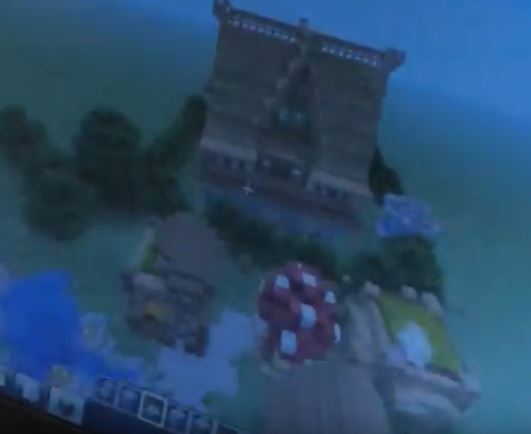Submitted by: Carey McCray and Mike Guyer
School: Deep Run High School
Summary
Students in a multilevel art design class collaborated with their peers and with a team of creative professionals from The Martin Agency to create advertising campaigns communicating the importance of creativity and art. Over the course of one month, the students worked in small teams as they were guided through the process of developing print advertising campaigns that advocated art education.
The experience culminated in a field trip to the Martin Agency, where students were given a personalized tour by the Dean Jarrett (Director of Corporate Communications). After the tour, the students congregated in the agency’s corporate conference room, where Judd Burnette (Designer), and Hank Thornhill (Digital Media Strategist) both spoke and answered questions about their experiences with design, advertising, and life at The Martin Agency.
While in the corporate conference room, students were led by Judd Burnette in a critique and brainstorm session of the work created prior to the field trip. After the Martin critique, students made changes to their designs before turning them in for the final evaluation.
After the work was turned in, Carey McCray had the best advertisements printed professionally and installed at Deep Run High School as well as its’ feeder middle schools.
TIPC Ratings
This lesson is target as the students were provided resources on effective design and guided through the de-construction of award-winning ad campaigns in order to understand the importance of background and ongoing research in creative advertising.
The assignment provided the students an opportunity to test the results of real-world research, as their creative product was used to promote value to the arts in education. Each day, the instructor would meet with the small student teams to facilitate inquiry and to help guide the research and campaign strategy specific to the interests and ideas of each team. The student research varied according to the direction of each group (autonomy was given), and a variety of research resources and strategies were provided.
This lesson is target as students collaborated in teams to create strategy and details of a real-world ad campaign. The students used advanced technologies, many of which are used in the advertising industry, to create original and purposeful works. Additionally, students worked with experts in the field in a collaborative critique with design and strategy gurus at Richmond’s most celebrated advertising agency. This lesson goes beyond the classroom in that students communicated in real and non-real time, as they shared their knowledge globally through a variety of appropriate social media outlets. Additionally, students were brought together in a round table discussion after the day-long field trip to the Martin Agency, where they were encouraged to give each other feedback on the work they created after having heard the comments by experts in the advertising industry.
This lesson is target as the teacher facilitated an environment where students were engaged in the creation of innovative advertising campaigns. The students were encouraged to take risks and try creative techniques that they felt would be effective (based on research, trends, and visceral responses).
The teacher provided multiple opportunities for feedback and assessment by peers, the instructor, as well as experts in the field of advertising. Students continually reflected on the process and the product they were creating. Most importantly, there was not one “right” way to solve the challenge spresented to the students. Instead, the possible solutions were infinite and specific to each team.
This lesson is target as students were engaged in an environment with meaningful questioning strategies, and were immersed in critical thinking, reflection, and creativity throughout the entire project. The students were provided with multiple resources to draw conclusions, based on clear patterns of evidence, to produce new understandings about persuasive design. Students were challenged to reflect on their product, their process, as well as those of their peers. Additionally, students were required to use prior research to develop and answer open-ended questions using higher-order thinking skills. The final product was authentic, meaningful, creative, and useful.






